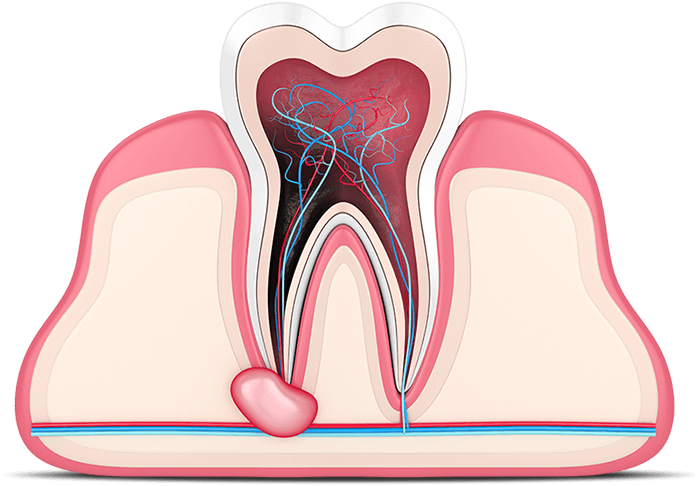

About 15 million teeth are saved every year with root canal treatment. A root canal is necessary when the pulp of a tooth becomes inflamed or infected. If pulp infection is left untreated, this can cause severe pain and/or lead to an abscess. While the perception that root canals are painful began decades ago, advances in dental technology have resulted in root canals that are no more uncomfortable than having a cavity filled.
At Advanced Endodontics of New York, we strive to change what patients think about root canal treatment by using technologies that enable a painless approach while also alleviating dental anxiety. During a root canal in our New York, NY office, our highly skilled endodontist Dr. Bose removes the infected pulp and nerve in your tooth root, cleans and shapes the inside of the root canal, then fills and seals the space.
At Advanced Endodontics of New York, we believe in using innovative endodontics in New York, NY to benefit our patients, such as micro-endoscopy and the GentleWave® Procedure. In fact, we’re one of only two practices in NYC to use groundbreaking GentleWave technology, which requires specific training and certification. Special operating microscopes enable our endodontist to see tiny details inside a tooth that guide more accurate treatment.
The GentleWave Procedure is a minimally invasive state-of-the-art protocol to access the infected root canal system. The protocol enables the preservation of more of the natural tooth, thereby helping the tooth structure remain strong. Using GentleWave, Dr. Bose and Dr. Ganik can typically clean and fill the tooth in just one visit, compared to the several appointments required with standard root canal therapy. Thorough debridement of the tooth is essential when performing root canal treatment to prevent the need for root canal retreatment or an apicoectomy. In our experience, GentleWave provides the most predictable method for thoroughly cleaning and disinfecting complex internal anatomies.

We are proud to offer state-of-the-art technology with the GentleWave® Procedure.



Causes of inflammation or infection in dental pulp include deep decay due to untreated cavities, repeated dental restorations or cracked/chipped teeth. Tooth trauma can result in pulp damage without visible chips or cracks to the enamel. Trauma can also cause nerves and blood vessels to deaden when blood fails to properly flow to these areas. The infection of the pulp is called pulpal necrosis. Bacteria from an infection can be carried by the blood vessels deep inside your tooth root. The clinical term for inflammation of the dental pulp is pulpitis. While the principal symptom is pain, diagnosis is based on clinical findings, as well as digital X-rays and pulp vitality tests. Treatment involves removing decay, restoring the damaged tooth, root canal therapy or tooth extraction.

When pulp inside your tooth root becomes infected, the pulp and bacteria must be removed to save your tooth, oral health and overall health. During a root canal at Advanced Endodontics of New York, NY, our endodontist first numbs the treatment site with a local anesthetic. If you suffer from dental anxiety or need additional sedation, we offer diverse sedation options. Either way, you won’t feel any pain, although you may experience slight pressure as we complete the procedure. We drill a small hole in your tooth crown to gain access to the pulp chamber and carefully clean out all the bacteria and infected pulp and tissues. Then we fill and seal the end with a rubberlike material called gutta-percha. Afterward, the tooth is restored with a crown or filling to protect it and restore normal function. We accept many insurance plans and offer third-party financing to ensure your treatment is both painless and affordable.

When our endodontist performs a root canal in New York, NY, this will enable you to live a comfortable and functional life free of tooth pain. The benefits of root canal treatment include:
The best way to prevent a root canal is to practice good oral hygiene, avoid hard food that can crack teeth, and protect your teeth when playing sports. Follow these additional precautions:

I understand the information disclosed in this form may be subject to re-disclosure and may no longer be protected by HIPAA privacy regulations and the HITECH Act.
